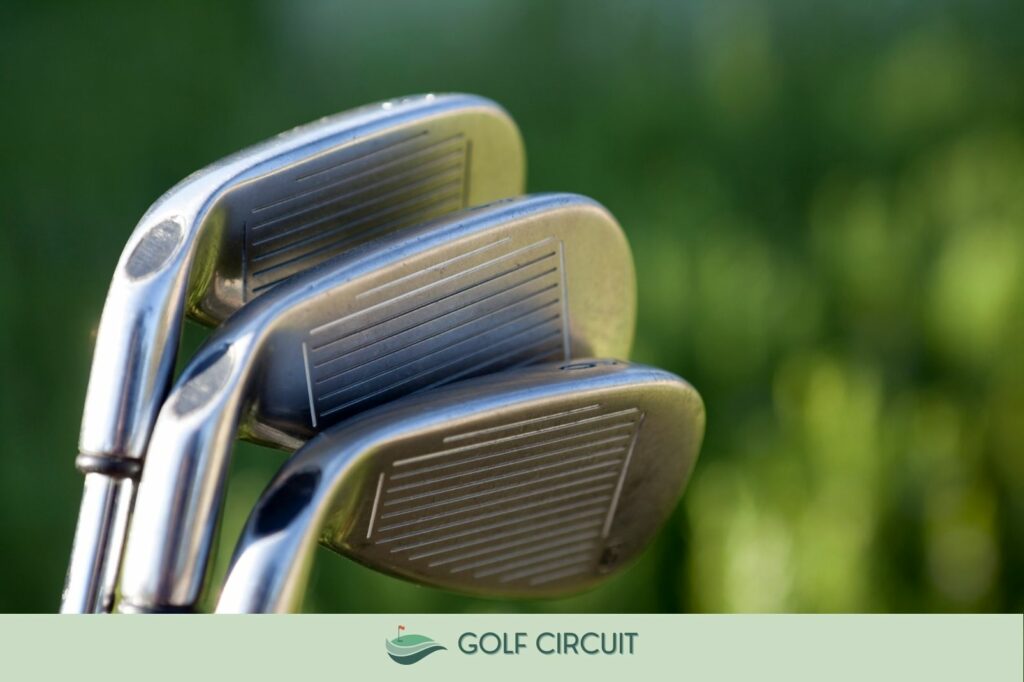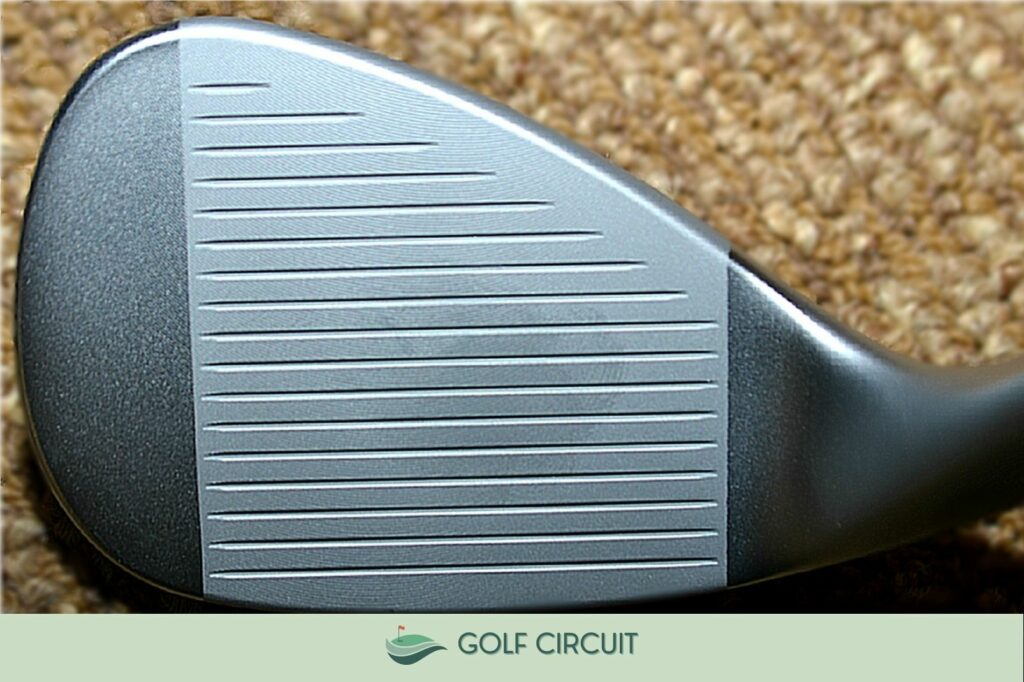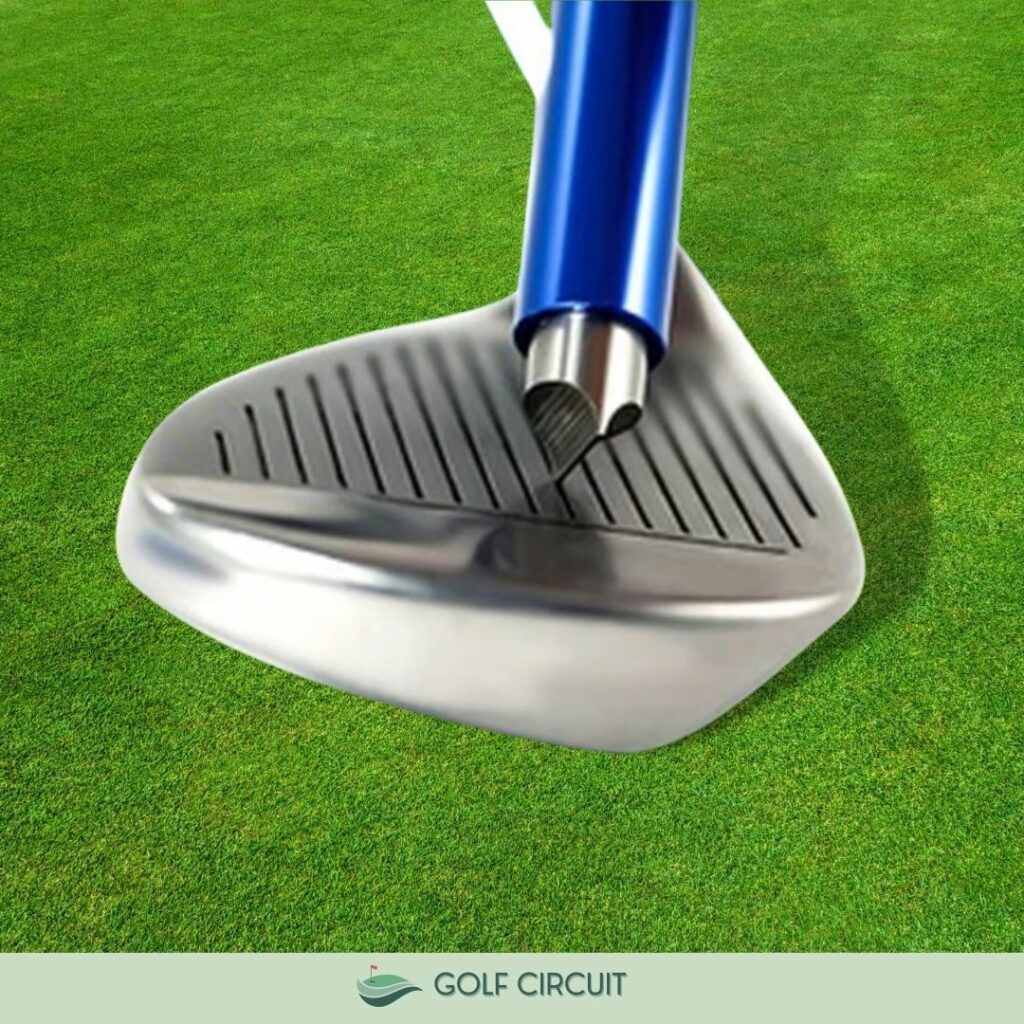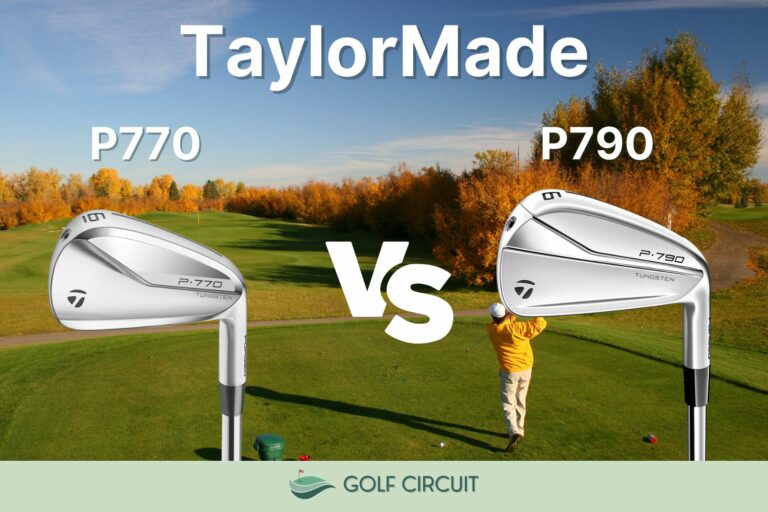Golf Club Grooves: What Are They And How Do They Help?

Have you ever looked at your irons and your wedges and noticed the grooves on the club? Chances are the groove pattern looks a little different from the iron to the wedge, something you may not have expected.
In fact, if you look at groove patterns from one golf manufacturer to another, you will also notice differences.
Golfers need grooves on their clubs as grooves have a major impact on performance. Whether you are new to the game or have been playing your entire life, you must understand the importance of club grooves.
What Are Golf Club Grooves?

Golf club grooves are parallel lines on the face of a golf club that help to ensure that golfers can get backspin and control of their shots.
The grooves do a great job of allowing water and debris to move away from the impact zone and allow for better connection between the ball and the club.
Golf club grooves can have different patterns, and some companies offer loft specific grooves.
These would change and become more elaborate based on the specific loft of wedges.
Why Do Golf Clubs Need Grooves?
Golf clubs need grooves to help with control of the golf ball.
Most golfers think that without grooves on the ball, there would be no spin when they hit a shot. Interestingly there would actually be more spin without grooves on the club.
However, this spin would be so high that it would create a shot that goes very high and completely without control of the ball.
The bottom line is that although grooves are not required, you will want them on your golf clubs. If you can become smart about keeping your grooves maintained and clean, you will end up with more accuracy on the course.
Types of Golf Grooves
There are several types of grooves on golf clubs.
In fact, if you are shopping for new wedges, you will see that companies often talk about their groove patterns and how it impacts you as a player. I know options like spin milled grooves and groove in groove technology come to mind as advancements in groove technology.
However, the two main types of golf grooves are the U and V grooves.
U Grooves

The PGA Tour and the USGA keep a close watch on groove technology and how it is impacting golfers. When hitting out of the rough, with the proper grooves, the performance can be significantly improved.
The goal of golf’s governing bodies is to ensure that performance does not improve so much that it is a problem or an unfair advantage.
Groove depth, as well as groove shape, can impact the performance that golfers are getting.
U grooves are shallower and have a round edge, exactly like the letter U looks. Although it may not seem like it, the U grooves allow for more debris to move away from impact.
The U grooves have caused some controversy because of how good they were. Professional golfers were having no trouble stopping the ball on the greens, even after hitting from a tight lie.
They attributed their success to the U groove shaping and performance. There are now strict regulations in place about the depth of the U grooves.
V Grooves

The V Grooves are the opposite of the U Grooves.
Many of them can be a little deeper at the point of the V, but the edges of the groove are sharper. Although the V grooves are great from a clean fairway lie, they are not known to be as effective from the rough.
Golf manufacturers have to work within the parameters set out by the USGA and the PGA Tour to create wedges with grooves that work and keep the game fair for everyone involved.
How Do I Maintain The Grooves on My Golf Clubs?

Maintaining the grooves on your golf club is very important. When your grooves are packed with debris, you will not get the same performance out of your clubs.
Here are some ways that I have kept my grooves in great shape through the years. Some golfers may have differing opinions about sharpening, but you must decide that for yourself.
Keep A Wet Microfiber Towel Nearby
The best way to keep golf clubs clean is to wipe them with a wet microfiber towel. I’ve tried all the rushes, rags, and cleaners throughout the year, and the simple golf towel does the best job.
The only thing to remember here is that if you stay more consistent with the cleaning of the grooves, than you will have better results.
For instance, if you have not cleaned your grooves yet this year, the microfiber towel may not be enough to remove the debris. You may have to do a major golf club cleaning and then follow up with the microfiber towel.
It takes a little hand strength at times to get the grooves clean, but you will never have to worry about damage to the club head itself.
Use a Tee For Tricky Spots
Sometimes a golf tee can be used to pick dirt and debris out of a clubface. It may seem like a simple solution, but it does work.
This is a good idea if you have hit a shot out of a muddy lie or even if you have sand built up from a bunker shot. The tee usually gets into the grooves and helps the dirt pop out.
After cleaning the dirt out with a tee, wipe the clubhead down with a wet cloth to make sure it is all out.
Groove Sharpening Tools
Some golfers like to use groove sharpening tools to keep their grooves in good shape. The groove sharpeners go down into the groove and work to help them return to their original status.
Groove sharpening tools (the better ones available on the market) work, but you must be careful with them.
Although these tools are legal, you cannot use them to alter the original shape or depth of the grooves in any way.
I have always been nervous about this process. It’s hard to tell exactly how you are sharpening the grooves, and in some instances, with these new premium faces, you can do damage.
If you don’t properly sharpen, you could also run into a situation where your golf clubs start to rust.
The bottom line here is that you can certainly sharpen your grooves if you would like, but you should be careful about it. In addition, there are some golf club manufacturers and services that will allow you to send your clubs away and have them regrooved by professionals.
General Good Practices for Maintaining Clubs
In addition to making sure you keep grooves clean and inspecting them to ensure they don’t need to be regrooved by the manufacturers, you can also do some things to help maintain the longevity of your grooves.
Using the proper golf ball is one of the best ways to ensure groove longevity. Grooves will start to deteriorate over time, and golf balls that are lower in quality, scratched, or scuffed can impact the grooves.
Players that hit hundreds of golf balls at the range will notice that their grooves fall apart quicker than others.
Be nice to your golf clubs, and play with a decent ball. In addition, if the golf ball has some rough edges, take it would of play.
Is It Legal To Sharpen Grooves on Golf Clubs?
It is legal to sharpen grooves on golf clubs, but you must ensure that you do not change the original structure of the grooves. When looking at a golf club, you can see what the original grooves looked like.
Follow these lines carefully and don’t shave or damage any of the material on the golf club. The sharpener should just be used to get the general shape back.
How Do I Know If My Grooves Are Worn Out?
The number one issue that golfers see when their grooves are worn out is higher shots that travel further than they should. These are often called fliers.
With a flier, you will be standing with an iron in your hand 150 yards to the green and hit it clear over the back of the green at least 160 yards.
For some, the idea of the flier sounds great because of the extra distance, but there is truly no control over these shots. We need some spin on the golf ball to play great golf.
Final Thoughts
Hopefully, you now have a better idea as to the importance of golf club grooves. The bottom line is that we need them, and all golf irons and wedges do a great job of providing spin and control because of these grooves.
However, if you want the grooves to work the way they should, you must keep the clubface clean and debris free. It’s frustrating to hit a bad shot, but it should infuriate you if that should be caused simply by forgetting to keep grooves clean.
The grooves should be on every golfer’s mind to ensure maximum performance.






